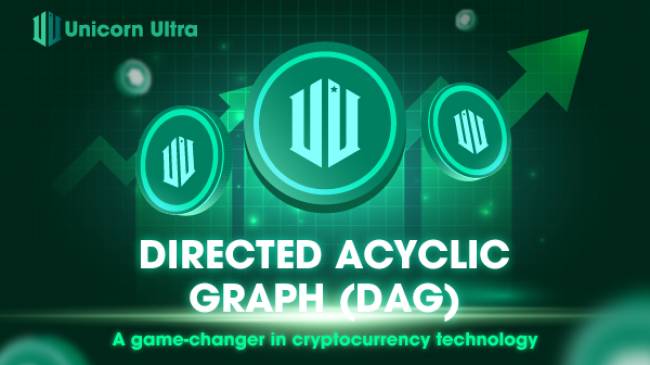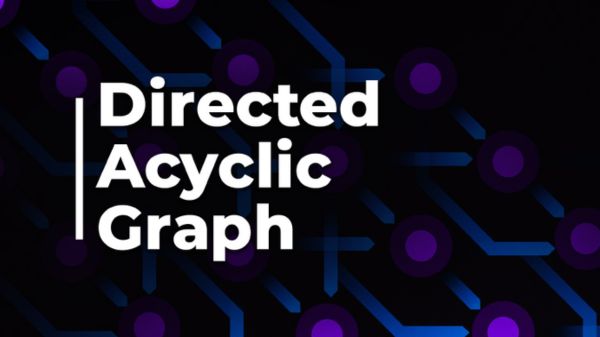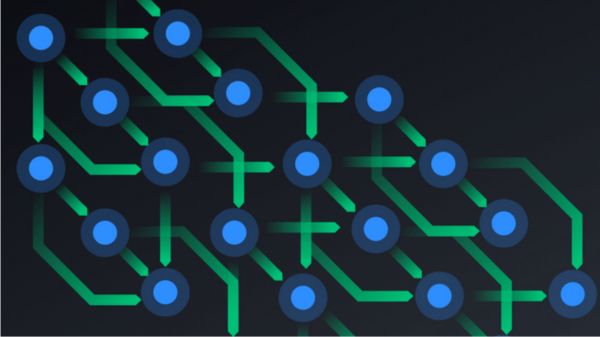Categories: General Information
What is Directed Acyclic Graph (DAG)? A Game-Changer in Cryptocurrency Technology
Discover the game-changing technology of Acyclic Graph (DAG) in the world of cryptocurrencies. Learn what is Directed Acyclic Graph (DAG), how DAG revolutionizes traditional blockchain architectures, offering scalability, efficiency, and enhanced security. Explore its applications and unlock the potential of DAG in shaping the future of cryptocurrency technology.
In the world of blockchain technology, Directed Acyclic Graph (DAG) has emerged as an innovative alternative to traditional blockchain architectures. With its unique structure and capabilities, DAG offers new possibilities for scalability, efficiency, and security in various applications, including cryptocurrencies. What is Directed Acyclic Graph? This blog aims to provide a comprehensive understanding of DAG, how it works, its application in cryptocurrency, as well as its advantages and disadvantages.
Table of Contents
What is Directed Acyclic Graph (DAG)?

What is Directed Acyclic Graph? Directed Acyclic Graph (DAG) is a mathematical structure that represents a network of interconnected nodes or vertices. The term "directed" refers to the presence of directed edges or arrows between the nodes, indicating the direction of data flow. The term "acyclic" implies that there are no loops or cycles within the graph, meaning that it cannot return to the same node by following a sequence of edges.
Components of Directed Acyclic Graph (DAG)
A Directed Acyclic Graph (DAG) is a data structure consisting of nodes connected by directed edges, where there are no cycles (i.e., no paths that start and end at the same node). DAGs are used in various fields, including computer science, mathematics, and blockchain technology. In the context of blockchain, DAGs are an alternative to traditional blockchain structures for achieving consensus and transaction validation. The components of a DAG in the context of blockchain include:
Nodes (Vertices): Nodes are the fundamental building blocks of a DAG. Each node represents a transaction or data unit in the blockchain. In a blockchain DAG, nodes typically contain transaction information, including sender, receiver, and transaction details.
Directed Edges (Arrows): Directed edges are the connections between nodes in a DAG. Each directed edge points from one node to another and represents the ordering of transactions or events. For example, a transaction can only be confirmed if its dependencies (parent transactions) are confirmed first.
Transaction Hashes: In a blockchain DAG, each transaction is assigned a unique cryptographic hash. The hash of a transaction includes the details of the transaction and acts as a unique identifier.
References (Pointers): In a blockchain DAG, each transaction references one or more previous transactions (parent transactions) to which it is connected. This linkage ensures the sequential order of transactions.
Consensus Algorithm: DAG-based blockchains often use specific consensus algorithms tailored to the DAG structure. Examples include the Tangle consensus used in IOTA and the DAG-based version of the Proof of Work (PoW) used in some cryptocurrencies.
Tip Selection: In a DAG-based blockchain, nodes need to select which transactions to approve and reference in their own transactions. This process is known as tip selection and affects the overall network's security and transaction confirmation speed.
Confirmation Process: In DAG-based blockchains, transactions are considered confirmed when they are referenced by a sufficient number of subsequent transactions. As more transactions approve a specific transaction, its level of security and finality increases.
Double-Spending Prevention: DAG-based blockchains employ various mechanisms to prevent double-spending issues. These mechanisms rely on the transaction confirmation process and the tip selection algorithm.
DAG-based blockchains offer advantages such as high scalability, reduced transaction times, and the ability to process multiple transactions in parallel. However, they also face challenges related to security, network partitioning, and attack prevention.
It's important to note that the specific components and characteristics of a DAG-based blockchain may vary depending on the implementation and design choices made by the project or protocol developers.
How does DAG work?
In a traditional blockchain, transactions are grouped into blocks, which are linked together in a linear chain. In contrast, DAG employs a different approach. In a DAG-based system, transactions are not grouped into blocks but rather added individually as separate vertices in the graph. Each new transaction references one or more previous transactions, creating a web of interconnected nodes. This referencing mechanism ensures the chronological order of transactions while eliminating the need for blocks and the associated mining process.
To validate a transaction in a DAG, it needs to be verified by confirming two or more previous transactions. This approach is known as a "confirmation consensus mechanism." As more transactions are added to the DAG, the network's overall security and confirmation speed increase. The concept of "tangle" is often used to describe the DAG structure in cryptocurrencies such as IOTA.

Application of DAG in Cryptocurrency
DAG-based architectures have gained significant attention in the cryptocurrency space due to several advantages they offer. One of the notable applications of DAG is in solving the scalability issue faced by traditional blockchain networks. In DAG-based cryptocurrencies, transaction throughput can increase with the number of participants, as each transaction contributes to the overall confirmation speed.
Moreover, DAG eliminates the need for miners and the associated computational power, making transactions feeless or significantly reducing transaction costs. This aspect opens up opportunities for microtransactions and real-time payment systems, making DAG-based cryptocurrencies well-suited for Internet of Things (IoT) applications.
Advantages and Disadvantages of DAG
Advantages
- a. Scalability: DAG-based architectures exhibit high scalability as transaction throughput increases with network participation, avoiding bottlenecks associated with block sizes in traditional blockchains.
- b. Transaction Speed: DAG enables faster transaction confirmation times due to parallel processing and confirmation consensus mechanisms, making it suitable for applications requiring near-instantaneous transactions.
- c. Lower Transaction Fees: DAG networks often have reduced or zero transaction fees, allowing for microtransactions and cost-effective payment systems.
- d. Energy Efficiency: Since DAG does not require mining, it consumes significantly less energy compared to proof-of-work (PoW) blockchains.

Disadvantages
- a. Security Considerations: DAG architects introduce new security challenges, including potential vulnerabilities such as double-spending attacks, transaction replay attacks, or network partitions. Robust security measures and consensus protocols must be implemented to address these concerns.
- b. Limited Adoption: DAG-based cryptocurrencies are relatively new compared to traditional blockchains like Bitcoin and Ethereum, which means they may have lower adoption rates and fewer development resources.
How to use Directed Acyclic Graph (DAG)?
Directed Acyclic Graphs (DAGs) are data structures used in various applications, including blockchain and distributed ledger technologies. Unlike traditional blockchains, DAG-based systems do not rely on a linear chain of blocks. Instead, they use a graph-like structure where each transaction or data entry is linked to multiple other entries, creating a network of interconnections. Here's how to use a DAG-based system:
- Transaction Creation: In a DAG-based system, users initiate transactions or data entries that need to be recorded on the network. Each transaction contains relevant information, such as sender, recipient, amount, timestamp, and cryptographic signatures for verification.
- Tip Selection: When a new transaction is created, the user selects two or more existing transactions as "tips" to approve and validate their transaction. Tips are unconfirmed transactions that have been verified by other users and are ready to be included in the network.
- Verification and Approval: To have their transactions confirmed and added to the DAG, users must participate in the consensus process. This typically involves validating tips and reaching a consensus on which transactions to approve. Users may use different consensus algorithms, such as Proof-of-Work (PoW) or Proof-of-Stake (PoS), to reach agreement.
- Adding Transactions to the DAG: Once a consensus is reached, the new transaction is added to the DAG as a new vertex, and it references the tips that approved it. This creates a directed edge from the approving transactions to the new transaction, forming a web of interlinked transactions.
- Confirmation: As more transactions approve a particular transaction (directly or indirectly), its level of confirmation and security increases. In a DAG, the number of approving transactions is often referred to as the "weight" of a transaction.
- Tangle Structure: The collection of all transactions and their interconnections forms a tangle-like structure, which is a directed acyclic graph. The tangle represents the complete history of all transactions and their relationships in the network.
- Double Spending Prevention: DAG-based systems typically utilize techniques to prevent double spending, ensuring that a user cannot spend the same funds in multiple transactions by exploiting the non-linear structure of the DAG.
- Consistency and Forks: To maintain a consistent state across the network, DAG-based systems need mechanisms to resolve forks or conflicts that may arise due to simultaneous approvals of different transactions. Conflict resolution algorithms aim to achieve a single valid and agreed-upon ledger state.
DAG-based systems offer benefits such as scalability, low transaction fees, and faster confirmation times compared to some traditional blockchains. Examples of DAG-based projects include IOTA, Nano, and Hedera Hashgraph.
It's important to note that the specific implementation and use of a DAG can vary between different projects and applications. Each DAG-based system may have unique features and requirements, so it's essential to understand the specific rules and protocols governing the particular DAG network you are using or interacting with.
Conclusion
What is Directed Acyclic Graph? Directed Acyclic Graph (DAG) represents a groundbreaking approach in the realm of blockchain and cryptocurrencies. Its unique structure and consensus mechanisms offer significant advantages in terms of scalability, transaction speed, and cost-effectiveness. Follow https://uniultra.xyz/ for more blockchain information.
